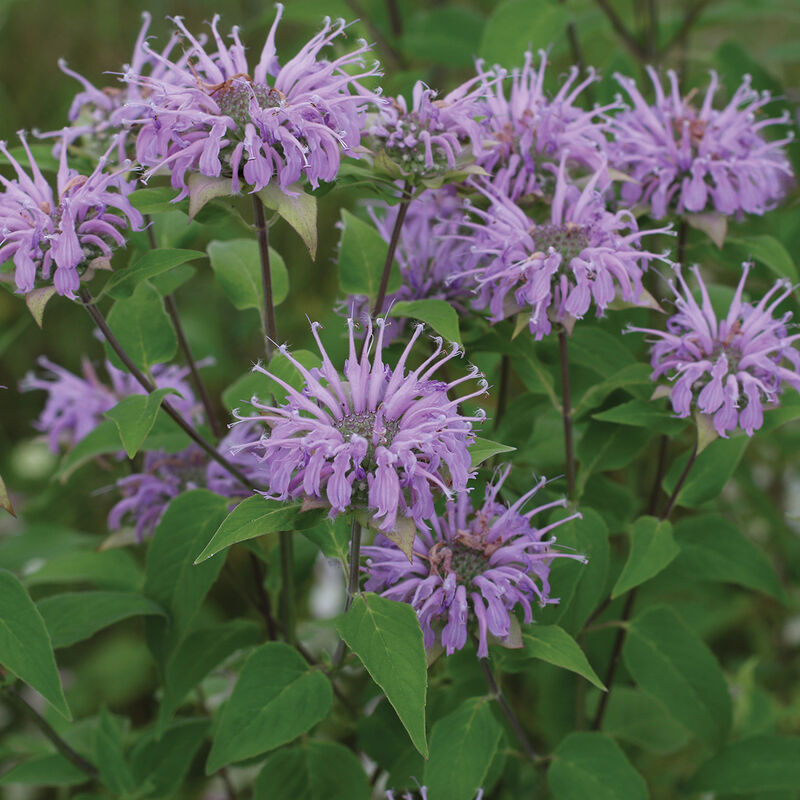Olive Seed Company
Bee Balm 'Wild Bergamot'
Bee Balm 'Wild Bergamot'
Couldn't load pickup availability
Wild Bergamot (Monarda fistulosa)
A hardy Canadian native, Wild Bergamot (also called Wild Purple Bee Balm or Purple Horsemint) carries soft lavender-purple blooms atop tall, airy stems and releases a fragrance that’s part oregano, part mint. This perennial thrives in wildflower gardens, meadows, and naturalized landscapes, blending seamlessly into pollinator plantings while adding movement and texture.
Traditionally used by Indigenous communities to ease colds and soothe ailments, it remains valued today for its herbal and culinary uses. The edible blooms bring a minty, slightly spicy flavour to teas, syrups, and garnishes. Flowers often appear in the second year, drawing in honeybees, butterflies, and hummingbirds in abundance, ensuring your garden hums with life and colour.
Pair with echinacea, rudbeckia, or liatris for a striking prairie-inspired display.
DETAILS:
QTY: 100
SITE: Full Sun - Part Shade
TYPE: Perennial
DEPTH: 1/8"
GERMINATION: 7 - 14 days at 16 - 21°C
HEIGHT: 24 - 36”
MATURITY: 365 Days
SPACING: 6 - 12”
PINCH: Not Necessary
HOW TO GROW:
Transplant (recommended): Start seeds indoors 8–10 weeks before the last frost. Sow on the surface of the soil, as light is required for germination. Mist or bottom water to avoid displacing seeds. Germination can be slow and erratic. Harden off seedlings by gradually exposing them to outdoor conditions before transplanting after the last frost.
Direct Sowing (alternative): Sow seeds directly outdoors in early spring while the soil is still cool, or in the fall. Lightly press seeds into the soil surface and keep the area consistently moist until germination.
Pinching: Pinching the tops of young plants can encourage a bushier habit. Deadheading spent flowers will prevent self-seeding and can encourage a second, smaller flush of blooms.
Soil Preference and Watering: Bee balm prefers full sun to partial shade and well-drained soil rich in organic matter. Keep the soil consistently moist, but avoid overhead watering, which can lead to powdery mildew.
Fertilizing: A single application of a balanced, all-purpose fertilizer in the spring is usually sufficient.
Harvesting: For bouquets, harvest stems when the flowers are fully open. The leaves are also edible and can be harvested for tea.
Disease: Bee balm is highly susceptible to powdery mildew, especially in humid conditions or during plant stress (including drought). To reduce risk: Keep soil evenly moist and avoid overhead watering. Space plants well for good air circulation. Remove any diseased foliage to prevent overwintering fungi. Divide plants every 3 years, replanting the healthy outer shoots and discarding old central growth.
Other Tips: Bee balm is a perennial that may spread slowly via rhizomes, forming clumps over time.
Shipping & Returns
Shipping & Returns

-
Free Shipping
Free Shipping on all orders in Canada over $125.00

